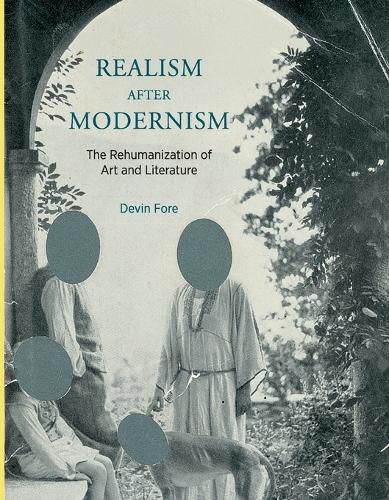Readings Newsletter
Become a Readings Member to make your shopping experience even easier.
Sign in or sign up for free!
You’re not far away from qualifying for FREE standard shipping within Australia
You’ve qualified for FREE standard shipping within Australia
The cart is loading…






The paradox at the heart of the return to realism in the interwar years, as seen in work by Moholy-Nagy, Brecht, and others.The human figure made a spectacular return in visual art and literature in the 1920s. Following modernism’s withdrawal, nonobjective painting gave way to realistic depictions of the body and experimental literary techniques were abandoned for novels with powerfully individuated characters. But the celebrated return of the human in the interwar years was not as straightforward as it may seem. In Realism after Modernism, Devin Fore challenges the widely accepted view that this period represented a return to traditional realist representation and its humanist postulates. Interwar realism, he argues, did not reinstate its nineteenth-century predecessor but invoked realism as a strategy of mimicry that anticipates postmodernist pastiche. Through close readings of a series of works by German artists and writers of the period, Fore investigates five artistic devices that were central to interwar realism. He analyzes Bauhaus polymath Laszl Moholy-Nagy’s use of linear perspective; three industrial novels riven by the conflict between the temporality of capital and that of labor; Brecht’s socialist realist plays, which explore new dramaturgical principles for depicting a collective subject; a memoir by Carl Einstein that oscillates between recollection and self-erasure; and the idiom of physiognomy in the photomontages of John Heartfield. Fore’s readings reveal that each of these rehumanized works in fact calls into question the very categories of the human upon which realist figuration is based. Paradoxically, even as the human seemed to make a triumphal return in the culture of the interwar period, the definition of the human and the integrity of the body were becoming more tenuous than ever before. Interwar realism did not hearken back to earlier artistic modes but posited new and unfamiliar syntaxes of aesthetic encounter, revealing the emergence of a human subject quite unlike anything that had come before.
$9.00 standard shipping within Australia
FREE standard shipping within Australia for orders over $100.00
Express & International shipping calculated at checkout
The paradox at the heart of the return to realism in the interwar years, as seen in work by Moholy-Nagy, Brecht, and others.The human figure made a spectacular return in visual art and literature in the 1920s. Following modernism’s withdrawal, nonobjective painting gave way to realistic depictions of the body and experimental literary techniques were abandoned for novels with powerfully individuated characters. But the celebrated return of the human in the interwar years was not as straightforward as it may seem. In Realism after Modernism, Devin Fore challenges the widely accepted view that this period represented a return to traditional realist representation and its humanist postulates. Interwar realism, he argues, did not reinstate its nineteenth-century predecessor but invoked realism as a strategy of mimicry that anticipates postmodernist pastiche. Through close readings of a series of works by German artists and writers of the period, Fore investigates five artistic devices that were central to interwar realism. He analyzes Bauhaus polymath Laszl Moholy-Nagy’s use of linear perspective; three industrial novels riven by the conflict between the temporality of capital and that of labor; Brecht’s socialist realist plays, which explore new dramaturgical principles for depicting a collective subject; a memoir by Carl Einstein that oscillates between recollection and self-erasure; and the idiom of physiognomy in the photomontages of John Heartfield. Fore’s readings reveal that each of these rehumanized works in fact calls into question the very categories of the human upon which realist figuration is based. Paradoxically, even as the human seemed to make a triumphal return in the culture of the interwar period, the definition of the human and the integrity of the body were becoming more tenuous than ever before. Interwar realism did not hearken back to earlier artistic modes but posited new and unfamiliar syntaxes of aesthetic encounter, revealing the emergence of a human subject quite unlike anything that had come before.